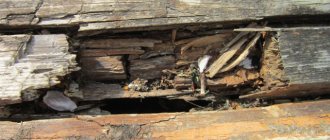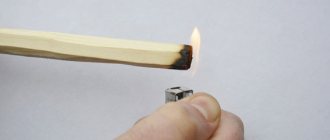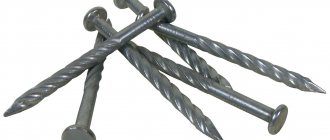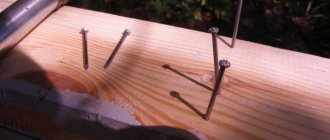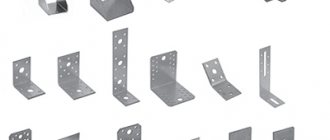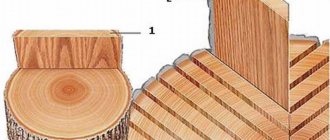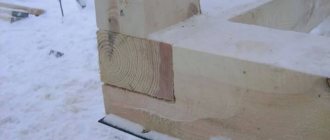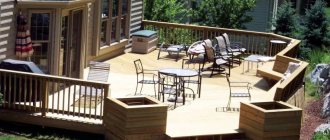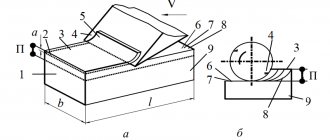Fasteners, otherwise called hardware (short for “metal products”), are one of the most widely used parts both in production and in everyday life.
Not a single repair and construction work can be completed without the use of various metal fasteners; they are an indispensable attribute of any developments in the field of mechanical engineering.
The modern construction market offers a wide range of these products. Their functional purpose can be completely different - from fixing an ordinary board to installing structures that must withstand increased operating loads.
Various metal alloys (most often steel) are used to make fasteners, so they are strong, resistant to loads and have sufficient durability - subject to basic operating rules.
This article will discuss the types of metal fasteners, their areas of application and methods of protection against premature wear.
Classification of fasteners
Today, metal fasteners come in a wide variety of shapes, sizes and purposes. The most popular are screws, bolts, nuts, self-tapping screws, screws, anchors, rivets, studs, washers, etc.
Bolt
- This is a fastener in the form of a rod with an external thread, having a four- or hexagonal head. It forms a connection using a nut or other threaded hole. Externally, this product has much in common with a screw; they are equally actively used in machine structures and construction. However, their methods of operation are different: the bolt passes completely through the parts being connected, and the screw is screwed into the threaded part with a screwdriver or socket wrench inserted into a notch on its head. The bolt is secured with a nut and wrench. When connecting two parts, it does not rotate inward, while the screw that is used in movable joints rotates in this way.
screw
It is a fastener with a hole, inside of which a thread is cut. Its main purpose is to connect parts using a bolt. The shape of nuts is hexagonal, round with notches, square, T-shaped, with protrusions for fingers, etc. Nuts also differ in strength class (in accordance with bolts).
Self-tapping screws
Most often used for fastening wooden structures. They can have frequent or large threads: the first are intended for connecting parts of small thickness made of metal with wood or plastic, the second - for wooden elements. Thanks to the drill-shaped tip, the self-tapping screw is able to independently make holes in parts.
Screw
- This is a fastener in the form of a rod with an external thread, a conical tip on one side and a head on the other. Screws are screwed into already prepared holes or into fairly soft materials (plastic, wood) - this is how they differ from self-tapping screws. Screws have a smaller height and thread pitch than self-tapping screws, which reduces the versatility of these products. Screws are most widely used in construction and finishing work.
Anchor
is fixed in the supporting base in various ways and holds any structure. There are two main parts of the anchor: non-expandable - not involved in fastening, and expansion - the working area that changes its size when forming a connection. Also, the anchor may have a cuff - a border that does not allow it to fall into the hole in the base or the product being secured. Anchors have a fairly wide range of applications - from joining sheet materials to fastening heavy structures and foundations.
Rivets
are divided into exhaust and threaded. Exhaust hoods most often consist of an aluminum body and a galvanized steel rod. The purpose of these products is to create a permanent connection between two or more surfaces using a power tool (access on the side of the closing head of the rivet is limited or closed). In mechanical engineering and electronics, threaded rivets are common and are used to join metals or other high-strength materials. They differ from standard exhaust hoods by the presence of an internal screw thread, which allows the creation of collapsible structures.
Hairpin
has the shape of a cylindrical rod with threads applied along its entire length or only at the ends. The product does not have a head and is used when none of the materials to be joined have a thread. The fastener is fixed with a nut, sometimes supplemented with a washer - a round plate with a hole in the middle, which is placed under the nut to increase the strength of the connection. Thanks to the washer, the pressing surface of the parts being fastened increases, which helps protect them from deformation when tightened. The studs are capable of fixing a wide variety of parts, including highly loaded ones, while the installation work itself does not require special skills.
Depending on the presence of a thread pitch, metric and non-metric (adapted) fasteners are distinguished. Metric includes screws, bolts, nuts and studs. The non-metric group includes fasteners of various shapes and sizes - nails, anchors, etc.
Another classification of metal fasteners is based on their areas of application. According to it there are:
- High strength threaded elements
- Mass Fasteners
- Fasteners for impact-free fixation and one-sided installation
- Elements for sealing structures
- Fasteners for fastening polymer composite materials, etc.
This classification, although it significantly simplifies the sorting process, is however very conditional, since elements of one group may also belong to another.
Butt joints
These are the simplest of carpentry joints. They can fall into all three categories of compounds.
Assembly
The butt joint can be strengthened with nails driven in at an angle.
Drive the nails in randomly. Trim the ends of the two pieces evenly and connect them. Secure with nails or screws. Before this, you can apply glue to the parts to strengthen the fixation. Butt joints in frame structures can be reinforced with a steel plate or a wavy key on the outside, or with a wooden block secured from the inside.
Steel fasteners: advantages and disadvantages
Particularly popular in mechanical engineering, instrument making, furniture and automotive industries, and construction are fasteners made of steel and its alloys. They are used to connect parts made of a wide variety of materials: wood, plastic, metal, concrete, etc.
Steel fasteners are characterized by high strength, flexibility, low metal fatigue (can easily withstand load changes), excellent electrical conductivity and an affordable price. Under high loads, steel fasteners do not change shape like plastic ones or break like cast iron ones.
The main disadvantage of conventional carbon steel is its low corrosion resistance. This problem in the manufacture of fasteners is solved in two ways: by using alloy steel (with the addition of chromium, nickel, silicon, molybdenum and other elements) or by applying special protective coatings.
Steels containing chromium and a small amount of carbon are highly resistant to rust. In percentage terms, stainless steel is a mixture of iron (Fe), carbon (C < 1.2%) and chromium (Cr > 10.5%).
Depending on the composition and properties, the group of stainless steels is divided into:
- Austenitic steels: contain about 15-20% chromium and 5-15% nickel; can be welded, cold worked and hot worked; are the most popular in the manufacture of fasteners; in classifiers they are designated by the letter “A”
- Martensitic steels: hardened by quenching followed by tempering, as a result of which they become harder than austenitic steels, but at the same time less corrosion resistant; in classifiers they are designated by the letter “C”
- Ferritic steels: much softer than martensitic steels due to their low carbon content; have magnetic properties; in classifiers they are designated by the letter “F”
Groove and side tongue joints
This is a combination of a quarter cut and a rebate cut. It is used in the manufacture of furniture and the installation of slopes for window openings.
Making a connection
1. Make the ends perpendicular to the longitudinal axes of both parts. Mark the shoulder on one part, measuring the thickness of the material from the end. Continue marking on both edges and the front side.
2. Mark the second shoulder from the end side; it should be at a distance of one third of the thickness of the material. Continue on both edges.
3. Using a thickness gauge, mark the depth of the groove (one-third of the thickness of the material) on the edges between the shoulder lines.
4. Using a hacksaw, saw through the shoulders to the thickness line. Remove waste with a chisel and check the alignment.
5. Using a thicknesser with the same setting, mark a line on the back side and on the edges of the second part.
Adviсe:
- Mortise and tongue-and-groove joints can be easily made using a router and a suitable guide - either for the groove only, or for both the groove and the tongue. Recommendations for proper operation of the router, see p. 35.
- If the comb fits into the groove too tightly, trim the face (smooth) side of the comb or sand it with sandpaper.
6. From the front side, use a thicknesser to mark the edges towards the end and at the end itself. Saw along the lines of the planer with a hacksaw. Don't cut too deep as this will weaken the joint.
7. Using a chisel from the end, remove the waste. Check fit and adjust if necessary.
Protective coatings for fasteners
Some metals (zinc, copper, aluminum, nickel, etc.), inorganic substances (phosphates, oxides) or antifriction solid lubricant coatings (ATSC) can act as protective coatings for metal fasteners.
The latter are actively gaining the trust of manufacturers due to their comparative ease of application and high efficiency.
Unique ATSPs are produced today by the Russian company. Coatings under the MODENGY brand are used in the production of various machinery and equipment.
For fasteners made of ferrous metals used in the instrument and automotive industries, aerospace and oil and gas industries, MODENGY 1010, MODENGY 1011 and MODENGY 1014 coatings based on PTFE (Teflon) are used. They have excellent anti-corrosion properties, therefore they reliably protect steel and cast iron fasteners from destruction under the influence of aggressive environmental factors.
MODENGY protective coatings for fasteners have excellent adhesion, high load-bearing capacity, and a wide range of operating temperatures.
These compositions are applied by conventional painting (most often from spray equipment) onto parts that have been previously cleaned and degreased with MODENGY 1013 solvent.
Anti-friction coating MODENGY 1002 is also used for fasteners. It provides slightly less anti-corrosion protection than previous compounds, but is very convenient to use: thanks to aerosol packaging and polymerization at room temperature (1010, 1011 and 1014 are cured when heated).
Rally
Wide, high quality timber is becoming increasingly difficult to find and very expensive. In addition, such wide boards are subject to very large shrinkage deformations, which makes working with them difficult. To join narrow boards along the edges into wide panels for tabletops or workbench covers, they use bonding.
Preparation
Before starting the bonding itself, you must do the following:
- If possible, select radial sawn boards. They are less susceptible to shrinkage deformations than tangential sawn timber. If tangentially sawn boards are used, then place their core side alternately in one direction and the other.
- Try not to combine materials with different sawing methods into one panel.
- Never join boards of different types of wood unless they have been properly dried. They will shrink and crack differently.
- If possible, place the boards with the grain in the same direction.
- Be sure to cut the material to size before joining.
- Use only good quality glue.
- If the wood will be polished, select the texture or color.
Rallying on a smooth fugue
1. Lay out all the boards face up. To facilitate subsequent assembly, mark the edges with a continuous pencil line drawn along the joints at an angle.
2. Plane straight edges and check fit to appropriate adjacent boards. Align the ends or pencil lines each time.
3. Make sure there are no gaps and that the entire surface is flat. If you squeeze the gap with a clamp or fill it with putty, the connection will subsequently crack.
4. When planing short pieces, clamp two in a vise, right sides together, and plane both edges at the same time. There is no need to maintain the squareness of the edges, since when joining they will mutually compensate for their possible tilt.
5. Prepare as for a butt joint and apply glue. Using squeezing and rubbing, connect the two surfaces, squeezing out excess glue and helping the surfaces “suck” to each other.
Other ways to rally
Other bonding connections with different strengths are prepared in the same way. These include:
- with dowels (dowels);
- in tongue and groove;
- at a quarter.
How to choose metal fasteners?
Currently, steel hardware with protective coatings are attributes of any electrical, mechanical and electronic device, most industrial, residential and public buildings. With the help of fasteners, detachable (bolt) and permanent (rivet) connections are created. Fasteners treated with special anti-wear and anti-corrosion compounds have proven themselves in aggressive environments with high humidity levels.
The stability and service life of the structure depend on the correct selection of metal fasteners.
Here are just a few of the requirements for fasteners:
- The type and diameter of products are selected based on the type of work, the strength and nature of the intended impact: transverse or longitudinal, static or dynamic
- The fastener must be many times stronger than the material with which it interacts.
- Even on non-potentially hazardous objects, the fasteners must be absolutely sealed
- Fasteners must be of high quality to ensure the reliability and safety of the structure
Miter splicing and cutting connection
A miter splice connects the ends of parts that are located on the same straight line, and a rip splice is used when it is necessary to connect two profile parts at an angle to each other.
Miter splicing
When miter splicing, the parts are connected with identical bevels at the ends in such a way that the same thickness of the parts remains unchanged.
Connection with cutter
A connection with a cut (with a cut, with a fit) is used when it is necessary to connect two parts with a profile in a corner, for example, two plinths or cornices. If the part moves during the process of fastening it, the gap will be less noticeable than with a miter joint.
1. Secure the first baseboard in place. Move the second plinth located along the wall close to it.
Clamp the first baseboard in place and press the second baseboard against it, lining it up with the wall.
2. Run a small wooden block with a pencil pressed to it along the profile surface of the fixed baseboard. The pencil will leave a marking line on the plinth being marked.
Using a block with a pencil pressed to it, with the tip pointed at the second plinth, draw along the relief of the first plinth, and the pencil will mark the cut line.
3. Cut along the marking line. Check the fit and adjust if necessary.
Complex profiles
Place the first plinth in place and, placing the second plinth in the miter box, make a bevel on it. The line formed by the profile side and the bevel will show the required shape. Cut along this line with a jigsaw.
Electrodes
Electrodes are excellent conductors of electricity. When studying the concept of "electrode", you need to consider the cathode and anode. The cathode is the current leaving the electrodes. The anode gives off electrodes, and it is on it that the oxidation reaction occurs. The electrode does not have to be metal. There are inert and reactive electrodes. The main difference is that reactive electrodes actively participate in processes, while inert electrodes are a passive type. Reactive electrodes can include zinc, copper, lead and silver, inert electrodes can include platinum, gold, rhodium. Electrodes are considered important elements in electrical connections because they enable the transfer of electrons from one source to another, creating an electrical charge.
The main use of electrodes is to create an electric current and pass it through non-metallic objects. Electrodes are also used to measure conductivity.
Types of hardware
Professionals classify this hardware according to several main characteristics, not counting its size.
The main feature is the type of head. There are models with countersunk hex or rectangular heads. The first option has cross or conical splines. Hexagonal elements have internal threads or slots that are intended for open-end or ring wrenches. Rectangular models are made with a rounded head, which is why technical hinges can be attached to them.
On the market and in stores you can find a wide variety of hardware, which are made from various materials. If you study this topic, you can understand that only the external technological coatings that perform a protective function differ. There are galvanized, copper-plated or darkened screw models.
They also differ in terms of use. Galvanized models can be used indoors as well as outdoors. Copper dowel does not like external influences, and therefore there is no reason to install it outside. Blackened mestizo is protected in the worst way of all, and therefore it is better to use it in places where moisture will not get in.
Anchors
In their design features they resemble a dowel-nail. The anchor consists of a dowel and a bolt. When the bolt is screwed in, the walls of the dowel expand. Anchors are used to secure large and heavy objects. There is a whole list of types of anchors.
Compression anchors are installed on ready-made non-demountable structures. When installing the frame, a tight fit is ensured between the three parts of the frame - the head, the stop and the hinges. Masonry anchors are used on frames attached to a brick block wall. Anchors with steel studs are attached to steel bases. Wood dowel anchors have one thing going for them: the anchor has clips that are used to wrap and secure it to the wood dowel during installation.
Attaching various shelves to the wall. Useful tips
In order to properly attach the shelf to the wall, you can use the following guidelines:
- both the bracket and the corners for the shelf must be securely fastened;
- each bracket for a removable system must be wide to firmly hold the shelf;
- all screws and other fasteners for various shelves to the wall must be correctly selected when purchasing;
- each purchased bracket must match the type of racks and shelves;
- fasteners for various shelves to the wall must correspond to the depth, width and height of the shelves themselves, as well as the weight of what will stand on them;
- Before ordering a wall mount for each shelf, you need to double check all measurements.
Fixed bracket and shelf mounting
The bracket is available in a wide variety of types. First of all, you need to understand how many of them you will need. Then it is determined how each bracket will be located on the bottom surface of the shelf. Holes are drilled and any fixing devices are inserted into them. After this, you need to screw the shelf using self-tapping screws.
The fixed bracket for attaching shelves to the wall has a wide range of varieties and different fastening technologies
When attaching a shelf with hidden fasteners, it is very important to maintain the exact distances between the holes
Special purpose self-tapping screws
Using similar elements, fairly massive wooden products are attached. The cap has milled ribs and is easily recessed into the product, while the tip is created like a drill. In the middle of the screw, the cutter makes a larger hole, helping to tighten the element as tightly as possible.
An adjustable self-tapping screw will be useful for fastening door frames, window openings, and solid wood sheathing to wood and metal. The self-tapping screw is screwed directly into the box, as well as the wall surface located behind it, or the power part.
The self-tapping screw acts as a weather vane for high-quality fastening of solid wood cladding to a base made of steel. It has a tip in the form of a drill and wings placed above it to expand the hole in the tree.
When drilling metal products, the wings break. As a result, having made a thread in a metal part, the self-tapping screw fits tightly to it, while the solid element is attracted by its head to the metal.
Staples
This type of hardware is used according to the principle of a nail. The brackets are U-shaped elements. They are mounted in soft surfaces of structures. The staples are designed for wood joints, MDF or plywood. For convenience and proper installation, use a construction stapler. It can be used to make reliable connections. Staples are often used in construction and furniture assembly.
Species diversity
If you try to consider what hardware products are, the photos of railway bolts will be different. This is not confusion or an error, there are simply plenty of subtypes of this fastener in the railway sector. WE WILL go through each one.
Terminal
It is used to connect the lining to the base. It is made of reinforced concrete, so the retainer requires high strength and considerable thickness. It is connected, accordingly, by a terminal. The most commonly used size is 175 mm. In this case, the mass will reach 0.6 kilograms. Used in KB 50 and 65 mounts.
To study the product, pay attention to the markings located on the head. The application is indicated by the letter “K” or “M”. But next to it is a set of numbers - this is the year of production. Although this is not a direct indicator of service life. After all, it depends on the environment in which the bolt will be used. If we are talking about marshy, cold areas, as well as with high train traffic, the shelf life is significantly reduced.
Mortgage
Interlocks the rail with the pad. Also used as an assembly, a nut is required in the kit. The most common type is M22175mm.
Palmate
One of the few fastening options, the quality of which is assessed according to technical specifications, and not according to GOST. At the same time, all its components from the collection, nut, washer, are already assessed according to the state standard.
Its shape is unique and visually easily distinguishes from analogues. Instead of a hat, a forged paw is used. That is, a small metal layer on one side.
Butt
Almost the most massive sample in our review. They are intended for coupling two-headed pads. And its declared standard size is M27x160. Accordingly, the weight also becomes quite decent - 0.818 kilograms. It is worth remembering that the need for such a resource arises only if R-65 pads are used.
